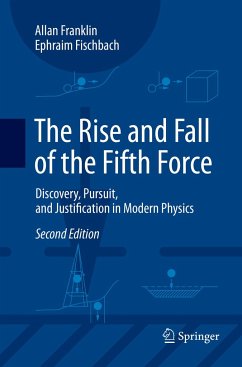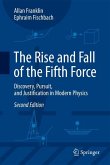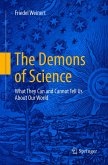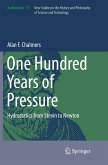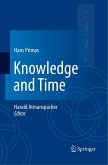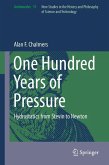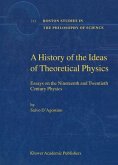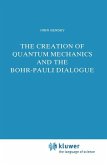Thisbook provides the reader with a detailed and captivating account of the storywhere, for the first time, physicists ventured into proposing a new force ofnature beyond the four known ones - the electromagnetic, weak and strongforces, and gravitation - based entirely on the reanalysis of existingexperimental data.
Back in 1986, EphraimFischbach, Sam Aronson, Carrick Talmadge and their collaborators proposed amodification of Newton's Law of universal gravitation. Underlying this proposalwere three tantalizing pieces of evidence: 1) an energy dependence of the CP (particle-antiparticleand reflection symmetry) parameters, 2) differences between the measurements ofG, the universal gravitational constant, in laboratories and in mineshafts, and3) a reanalysis of the Eötvos experiment, which had previously been used toshow that the gravitational mass of an object and its inertia mass were equalto approximately one part in a billion. The reanalysis revealed that, contrary to Galileo'sposition, the force of gravity was in fact very slightly different fordifferent substances. The resulting Fifth Force hypothesis included thiscomposition dependence and also added a small distance dependence to theinverse-square gravitational force.
Over the next four yearsnumerous experiments were performed to test the hypothesis. By 1990 there wasoverwhelming evidence that the Fifth Force, as initially proposed, did notexist. This book discusses how the Fifth Force hypothesis came to be proposedand how it went on to become a showcase of discovery, pursuit and justificationin modern physics, prior to its demise.
In this new and significantly expandededition, the material from the first edition is complemented by two essays, onecontaining Fischbach's personal reminiscences of the proposal, and a second onthe ongoing history and impact of the Fifth Force hypothesis from 1990 to thepresent.
Back in 1986, EphraimFischbach, Sam Aronson, Carrick Talmadge and their collaborators proposed amodification of Newton's Law of universal gravitation. Underlying this proposalwere three tantalizing pieces of evidence: 1) an energy dependence of the CP (particle-antiparticleand reflection symmetry) parameters, 2) differences between the measurements ofG, the universal gravitational constant, in laboratories and in mineshafts, and3) a reanalysis of the Eötvos experiment, which had previously been used toshow that the gravitational mass of an object and its inertia mass were equalto approximately one part in a billion. The reanalysis revealed that, contrary to Galileo'sposition, the force of gravity was in fact very slightly different fordifferent substances. The resulting Fifth Force hypothesis included thiscomposition dependence and also added a small distance dependence to theinverse-square gravitational force.
Over the next four yearsnumerous experiments were performed to test the hypothesis. By 1990 there wasoverwhelming evidence that the Fifth Force, as initially proposed, did notexist. This book discusses how the Fifth Force hypothesis came to be proposedand how it went on to become a showcase of discovery, pursuit and justificationin modern physics, prior to its demise.
In this new and significantly expandededition, the material from the first edition is complemented by two essays, onecontaining Fischbach's personal reminiscences of the proposal, and a second onthe ongoing history and impact of the Fifth Force hypothesis from 1990 to thepresent.

